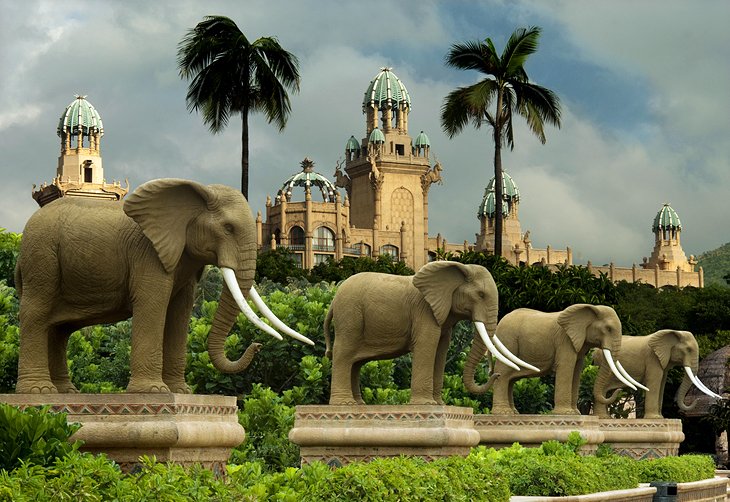Little Known Facts About Johannesburg North Attractions.
Little Known Facts About Johannesburg North Attractions.
Blog Article
The Facts About Johannesburg North Attractions Uncovered
Table of ContentsThe Main Principles Of Johannesburg North Attractions Johannesburg North Attractions Fundamentals ExplainedNot known Factual Statements About Johannesburg North Attractions Little Known Questions About Johannesburg North Attractions.Little Known Facts About Johannesburg North Attractions.Rumored Buzz on Johannesburg North Attractions
The city grew on the edge of the Witwatersrand Main Coral reef, a subterranean stratum of gold-bearing quartz-silica conglomerate that arcs for hundreds of miles underneath the Highveld - Johannesburg North attractions. Many of the gold mines in the city ceased procedure in the 1970s, yet in its day the Witwatersrand gold industry accounted for even more than 40 percent of the globe's yearly gold manufacturing.Johannesburg has a temperate climate. Summer season temperature levels average about 75 F (24 C); winter months temperatures balance regarding 55 F (13 C) and just occasionally dip listed below freezing. The city takes pleasure in about eight hours of sunlight per day in both wintertime and summer season. Rainfall averages concerning 28 inches (700 millimetres) per annum, but the overall differs substantially from year to year.
What rainfall the city gets drops nearly specifically in the summer season months, typically in magnificent late-afternoon electric tornados., where numerous residents still depend on coal for gas.

How Johannesburg North Attractions can Save You Time, Stress, and Money.
The balance of the city is inhabited by whites. Accommodation differs in character and top quality.
Physical growth, although rather restricted by transportation, proceeded promptly as immigration to South Africa, and Johannesburg in specific, enhanced considerably.
The majority of inadequate residential areas were mixed, with poor blacks and whites living together, although the wealthy residential areas were normally scheduled for whites.
The previous system of eleven numbered regions was reorganised in 2006. Marshalltown, as seen from the top of the Carlton Centre. The M1 and M2 run behind the buildings, and the southern suburban areas expand past the freeway boundary. The central city of Johannesburg lies within the city's Region F. The estimated population of the area is 200,000, [] The number of individuals living in the internal city on a casual basis is unidentified, as lots of are illegal immigrants. Most higher-income locals and white people have actually relocated to the northern residential areas and have actually been changed by lower-income black people. The unemployment, education and learning, and age profiles of the location are all unidentified, because of the difficulty of acquiring reliable info concerning the area.
A Biased View of Johannesburg North Attractions
Yeoville and Bellevue have a mix of apartment and solitary property units on little whole lots. The area is located on a mountainous divide that ranges from eastern to west. One of the most noticeable geographical attribute is Observatory Ridge, which is called for the big observatory situated on it. The entertainment rooms are no more utilized, due to security troubles.

The Ultimate Guide To Johannesburg North Attractions
R. Tambo International Airport). The eastern suburbs are great post to read several of the oldest locations of Johannesburg, there are large communities of Jewish and various other European backgrounds, most of the populace is English talking. There are 3 fairway along with a number of safeguarded ridges with viewsites. There are several strong and up-market enjoyment and visit our website shopping areas in the eastern such as the Eastgate Mall and the Greenstone mall.
The location is mainly composed of old "matchbox" residences, or four-room homes developed by the government, that were constructed to give affordable accommodation for black employees throughout racism. Soweto is an acronym, standing for "South Western Townships". Street after road in this location is lined with matchboxes; nonetheless, there are a couple of smaller sized locations where prosperous Sowetans have constructed homes that are a lot more similar in stature with those in even more upscale suburban areas.
Hostels are another famous physical attribute of Soweto. Originally built to house male migrant employees, several have actually been enhanced as homes for couples and family members. The N1 Western Bypass skirts read what he said the eastern border of Soweto. The residential area was not historically allowed to develop employment centres within the area, so nearly all of its homeowners are travelers to various other parts of the city.
Johannesburg North Attractions - Truths
The N1 Western Bypass connects the north suburbs with the north-western suburban areas. The domestic locations in the northern residential areas are generally formal, without any substantial areas of casual real estate, or housing that does not have a long-term structure. Although this is a well-known location, there is a pattern of land use change from household to business, particularly along major arterial roadways and around recognized nodes.
Roadways to the east and west are much less well established, as there are no highways taking a trip in that direction. Towards the northern border of the city, the density of growth reduces, leaving large locations of untaught land around Midrand.
What Does Johannesburg North Attractions Mean?
, which is located on a hill neglecting the inner city and Hillbrow.
Report this page